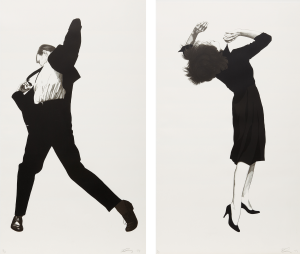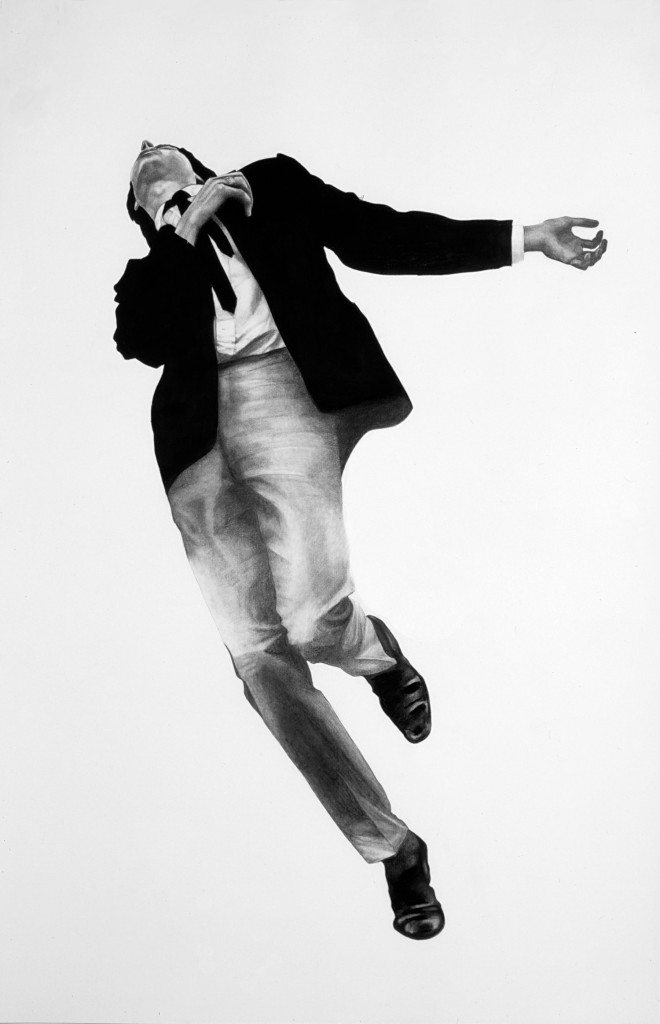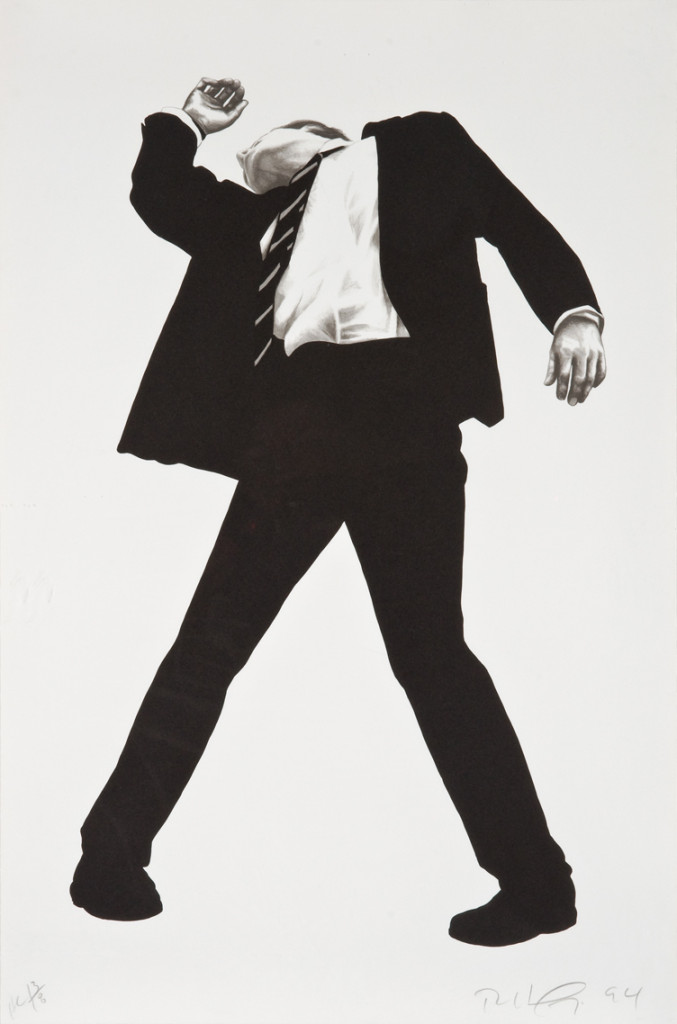If you get off the N train at 8th street, walk past the tattoo parlors and bright storefronts of St. Mark’s Place, you’ll find the Ukrainian East Village Restaurant next to a corner of other Ukrainian bakeries. Enter; walk through the fluorescent lobby area and into a deserted restaurant dining room, and open the doors.
Inside, the back room of the Ukrainian Restaurant has been cleared out to reveal a dance floor. Fairy lights ornament the wall moldings, and tango music plays grainy as if from a gramophone. Couples press against each other with their chests close, the men leading the women backwards across the floor.

This is a milonga, or Argentine tango’s social dance. This particular milonga occurs on Mondays, Thursdays, and Fridays, and many of the dancers here attend every night. On nights this milonga is not offered, dancers supplement their time at alternative venues in Astoria, off Times Square, and the Upper West Side. There is no mention of tango in the Ukrainian East Village Restaurant listings.
I walk in with a high school friend, C, and pay the cover. I have cajoled her into bringing me along to experience a night at a legitimate tango venue. My only other knowledge of tango was a free lesson at the Carl Fields Center, with a class population of mostly horny grad students. I’ve heard C speak about this world with a sort of reverence she usually reserves for good literature or good hummus, and so I have tasked her with showing me the glamour of her tango scene.
C and I sit to the side of the dance floor while I watch the women with their long skirts and their closed eyes. Most of the dancers are older than thirty, so C and I stand out. They are all elegantly dressed, the women in long skirts, hair wound into slick twists. The dancers move about naturally in their finery, like characters from an old painting suddenly freed from their canvas and allowed to move their limbs. I get the sense that they have all been dancing for much of their lives. I pay for my ticket and C explains the etiquette. To begin dancing, you must first be asked by a man who will “cabaceo” you, or select you to dance with a nod of the head and direct eye contact. A woman can demur simply by not meeting his eye.
Each turn of dancing is called a tanda, and each couple dances the length of a tanda with a partner before the change of music signals the end of the turn and couples drift off the floor to find new dance partners. As a beginner, it’s rude to refuse a dance, and almost unheard of to walk away before the tanda is complete.
C danced for the first time the winter break of her freshman year of college, when she accidentally found herself at a milonga. She was at a restaurant in Berlin that was also a dance hall (she didn’t know) and as she was eating her dinner, the tables opened up into a milonga. C watched the couples and figured she could try. So she sat on the edge of the floor, folded her legs and stuck them out a little until someone asked her to dance. And someone did. Advised by the German men who instructed her first crash course in tango, C removed her shoes and glided over the open floor in thick fuzzy socks.
During C’s first year at a prestigious college in the city, a classmate of hers brought her to her first milonga. Milongas are not for the weak; attendance is limited to those who are fluent. C wasn’t ready—she had only just started taking tango lessons and was still dancing sans shoes to keep her movements fluid, but the pull of it was inexorable. C was immediately drawn to the strange, glamorous and intellectual world she had discovered. Soon after the first milonga, C became involved with the classmate.
There are a fair number of couples in the tango community. It makes sense. Not only are you so close to someone for a large portion of the night, physically, but also for those who find themselves at a milonga in New York City in the middle of the night, there’s enough common ground to ensure at least slight romance. You’re dancing close, closed-eyed. There’s room for smalltalk but only between tandas; before any conversation can peter out you’re held against each other’s chests, silent, intent. The milongas feel far from real life. You’re removed from the irritants of the city, at least for a few hours.
Most tango dancers are academics and intellectuals; often, a shared passion for dance and culture can evolve into a purer level of passion. There’s a myth that Tango originated in the slums and brothels of Argentina, of the workers who would search for comfort and find it pressed against the moving form of their dance partner. This origin story is denied as often as it is cited—some say the upper classes were those who tangoed first, some chart the evolution of tango from the lower classes to the elegant dance halls in the early 1920s, when the fashionable European societies became obsessed with its sensuality and elegance. Watching the milonga, it’s easy to believe both stories. The way the couples grip each other and hold the contact is bold, almost shocking. But the way they move across the floor is more refined than a waltz.
The more time C and her classmate spent together at school, the more they went dancing— at that point, she estimates, around four to five days a week. If she wasn’t going with him, she went alone.
According to dancer, DJ and tango instructor Artem “Tioma” Maloratsky, this pattern is endemic of those he refers to as the tango “addicts,” or people who attend milongas such as this one almost every day of the week. Most of the dancers who attend serious milongas know each other.
Maloratsky discovered the tango scene a few months after he moved to New York in 1996, and has been dancing since. For the first several years he lived in the city, he danced almost every day, but now he dances a minimum of 3 times per week, often 4, sometimes 5. For many including himself, “one of the main aspects of tango is its function as a communal ritual, which occurs at set times and places regularly.” To Maloratsky, the repeated nature of coming together for the sake of dancing feels meaningful.
“We dance to unusually beautiful dance music, possibly the most sophisticated music produced specifically with popular dancing in mind since the beginning of the 20th century,” he says. “The best of the classic tango music is so good that people dance to the same songs for decades and never tire of them, as one never tires of hymns or mantras.”
Tango as ritual is particularly helpful for those who turn to it for other sorts of respite beyond the social; Maloratsky concludes that tango’s culture of strict dance floor etiquette can attract people who feel more comfortable dancing with strangers than talking to them.
Beyond this, he believes tango can “act as a therapy or a tool for self-development, both psychologically and psycho-physically.”

Like Maloratsky, C came to tango after beginning a new life in the city. As she attempted to navigate the stresses and uncertainties of living alone at a new school, tango became a way to cope with these stresses. Like those turn to religion for the calm and purpose of its rituals, C found the same possibilities in tango; the environment lifted her out of her anxieties into a constructed neverland where school mattered less than the rhythm of her feet skimming the floor. Like ritual too, tango possessed the possibility to bring her farther from herself. This proved to be as much a godsend as it was a detriment.
C has insomnia, which allowed her to take on a severely rigorous tango schedule. She would take the subway from her dorm and go to a lesson at 6:30, stay for another lesson, then go to a milonga and stay at the milonga until it closed at around 2 am. She did this almost every night while maintaining a full school schedule. The lure of it became its own stressor, and she noticed that when she wouldn’t attend milongas, some of the serious participants would needle her. Why wasn’t she there? Was she not serious? “It’s like a drug,” she tells me later. “If you don’t do it you go into withdrawal.”
For all that it offered escape, the tango community of New York City is not perfect. There are flaws, some inherent within insular collectives of people, and some only befalling the particular style of dance. When C was in a relationship, she found that some of the tango regulars weren’t interested in dancing with her. Conversely, when her relationship status was not known, she experienced some sexual aggression. There was the 56 year old who continuously asks C out with the line, “you’re not still 18 are you? I know some women don’t care about the age!” and once a dance partner who pressed an erection against her leg in the middle of a tanda. C waited until the song was over, and then spurned him alone on the dance floor. She has never danced with him again.
We are sitting to the side of the Ukrainian Restaurant back room and a man approaches C and cabaceos her. She closes her eyes and he guides her gracefully across the floor.
I, too, am asked to dance. This man, a tango regular, cabaceos me before I can confess I don’t know how. He has been dancing tango in New York for around ten years with what he describes wryly as the “dour couples and frustrated academics” who make up the tango scene. What keeps him returning, he says, is that rare moment when he feels what he calls the sentimiento, the passion, and the music inside his partner—usually with Argentinean dancers.
He himself is a fine dancer and attempts to instruct me on proper posture, gamely leading me through the floor before returning me to my seat, where C and I resume our conversation.

Here, C does not have trouble finding dance partners. I have not been so easily blessed—though I have danced ballet for most of my life, I have proved disastrous at dancing with a partner. My date left me in the middle of a tanda—not something he was technically allowed to do, since it’s considered impolite and offensive, but I was bad enough to make it seem reasonable. Now, I’ve assumed an identity as a milonga pariah. I sit to the side of the floor and watch C dance, until a friend of hers offers to dance with me (at her suggestion). “I know about your condition,” he says, and proceeds to gingerly offer tips as I kick him with my heels.
After a few more tandas, C and I walk out of the dance floor and towards the subway home. There are repairs on the track, so we talk for a while in the station. We’re nearly alone, and it’s nearly 3 am. Our words echo and I feel very far from the world we just left.